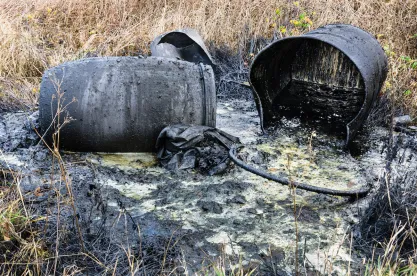The U.S. Supreme Court ruled today in Atlantic Richfield Company v. Christian that private landowners at a Superfund site near Butte. Montana, can pursue state law claims in state court seeking “restoration damages” for cleanup actions that go beyond the EPA-selected remedial action. The Court also held, however, that these landowners are potentially responsible parties (PRPs) under the federal Comprehensive Environmental Response, Compensation and Liability Act (CERCLA) and, as a consequence, must obtain EPA approval of the restoration plans before they can be implemented. Chief Justice Roberts wrote the Court’s opinion, in which five other justices joined. Justice Alito wrote a dissenting opinion declining to sign on to the majority’s conclusion “that state courts have jurisdiction [under state law] to entertain ‘challenges’ to EPA-approved CERCLA plans,” taking the position that it was unnecessary for the Court to address this question. In a separate dissent, Justice Gorsuch, joined by Justice Thomas, disagreed with the conclusion that the landowners were “PRPs” who needed EPA’s approval to conduct more robust cleanup at their properties than otherwise required by EPA.
The dispute concerns the interplay of four sections of CERCLA. Section 107 identifies the “covered person” that may have liability to perform or pay for response actions under CERCLA. Section 113(b) establishes the sole jurisdiction of the federal courts over CERCLA claims. Section 113(h) removes federal court jurisdiction over certain challenges to CERCLA remedial decisions. A number of lower courts had held in other cases that Section 113(h) prevents courts from entertaining any claim that could conflict with an EPA remedy decision. E.g., Bartlett v. Honeywell Int’l Inc., 737 Fed. Appx. 543 (2d Cir. 2018). Section 122(e)(6) prohibits a PRP from undertaking “any remedial action” without “authorization by the President” (which has been delegated in most cases to EPA) at any facility where EPA or a PRP acting under an administrative order or consent decree “has initiated a remedial investigation and feasibility study.”
The case came to the Supreme Court almost two years ago after several years of litigation in Montana state courts. The Supreme Court of Montana had ruled that the landowners could pursue their restoration damages claims under state law and that the landowners were not CERCLA PRPs and therefore would not need EPA approval of their restoration plans. The Court granted certiorari to address three issues: “1. Whether a common-law claim for restoration seeking cleanup remedies that conflict with EPA-ordered remedies is a ‘challenge’ to EPA’s cleanup jurisdictionally barred by § 113 of CERCLA. 2. Whether a landowner at a Superfund site is a ‘potentially responsible party’ that must seek EPA’s approval under CERCLA § 122(e)(6) before engaging in remedial action, even if EPA has never ordered the landowner to pay for a cleanup. 3. Whether CERCLA preempts state common law claims for restoration that seek cleanup remedies that conflict with EPA-ordered remedies.” The Court invited the Solicitor General to file a brief expressing the views of the United States; the U.S. supported ARCO’s position in the case. Amici filed briefs in support of each side.
The Justice Roberts’ majority opinion first addressed jurisdictional matters and concluded that (i) the Supreme Court has jurisdiction to review the decision of the Montana Supreme Court and (ii) the Montana courts have jurisdiction over the landowners’ state law claims for restoration damages. The Court held that CERCLA “deprives state courts of jurisdiction over claims brought under [CERCLA]. But it does not displace state court jurisdiction over claims brought under other sources of law.” Slip op. at 8-9. Because the landowners’ claims “arise under Montana law and not under [CERCLA] … the Montana courts retain jurisdiction over this lawsuit, notwithstanding the channeling of Superfund claims to federal courts in §113(b).” Id. at 9-10. Addressing the express terms of Section 113(h) and the interplay of Sections 113(b) and 113(h), the opinion explains in some detail why the arguments of ARCO and the U.S. opposing state court jurisdiction fail. “Sections 113(b) and 113(h) thus each do work independent of one another. The two provisions overlap in a particular type of case: challenges to cleanup plans in federal court that arise under the Act.” Id. at 13. Because the landowners’ claims were not brought in federal court and arose under state law, they were not preempted by Section 113(h).
While finding that the Montana Supreme Court answered the jurisdictional question correctly, the Court held that the Montana court “erred by holding that the landowners were not potentially responsible parties under [CERCLA] and therefore did not need EPA approval to take remedial action.” Id. To reach that conclusion, Justice Roberts’ opinion focuses on the status of the landowners as the “owners” of a “facility,” irrespective of their actual liability for the payment of response costs to address contamination on their land. The opinion notes that the owners of property can be PRPs even if they have never received notice of PRP status, never been named as parties in any administrative or judicial action under CERCLA, and ultimately are not subject to liability, whether due to the running of the relevant statute of limitations or because they qualify for one of the defenses to liability contained in CERCLA. Id. at 14-15. Based on the conclusion that the landowners are PRPs under the statute, the Court held that they are subject to Section 122(e)(6) and cannot undertake restoration work without EPA authorization: “Landowners at Superfund sites containing hazardous waste must seek EPA approval before initiating their own bespoke cleanups.” Id. at 15 n.7.
The Court’s decision addresses a number of interesting questions about federal court jurisdiction in general that are beyond the scope of this post. The decision also is notable as yet another exercise by the Court of trying, without great success, to make sense of the many vague and often seemingly contradictory provisions of CERCLA. In his separate opinion, Justice Alito likened Section 113 to “a puzzle with pieces that are exceedingly difficult, if not impossible, to fit together.” Opinion of Alito, J. at 3. It is notable that on a question as fundamental as who is and who is not a “PRP” under the statute, the Court could not come to a consensus regarding the solution to the statutory puzzle.
As a matter of CERCLA practice, the effect of the Court’s ruling may not be terribly far-reaching. First, the decision likely comes into play only where state law allows for “restoration” as a form of damages to property resulting from trespass or nuisance or some other circumstance actionable under state law. In Montana, for example, “restoration” is only available for damages to a property that serves as a private residence and for which the owner demonstrates “personal reasons” for restoring the property. Such circumstances are not typical of most Superfund sites. Second, following this decision, any restoration to which a property owner may be entitled under state law must have EPA’s sign off. In many cases, the same reasons on which EPA relied to specify the remedial actions for the site under CERCLA often also may lead EPA to disapprove a landowners’ request to conduct more robust cleanup. Indeed, EPA previously expressed its objections to the restoration plans at issue in the ARCO case, leaving significant doubt whether the landowners in this case will ultimately realize the potential benefit of the Supreme Court’s decision.







 />i
/>i
